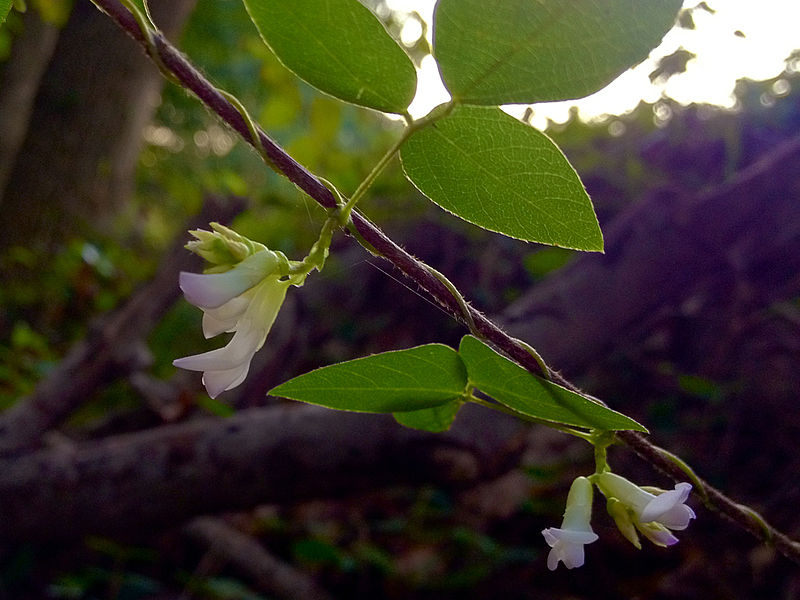
Hog peanut is an unusual vine because it has two kinds of flowers and two kinds of fruits. The upper flowers are produced in 2″ long clusters of 2-15 in the leaf axils from late summer to fall. Each pea-like flower is 1/2″ long, has 5 petals that are white, pale pink, lilac or pale purple, and gives rise to a flat, spotted pod that is pointed at each end and contains 3-4 seeds. A second kind of flower is produced at ground level. It lacks petals, self fertilizes, and produces a single-seeded fleshy 1/2″ wide pod that lies just beneath the ground (like a peanut), is edible, and eaten by hogs, mice, and voles, and various birds including ruffed grouse, ring-necked pheasant, and bobwhite. The attractive 3-part leaves of hog peanut provide food for the larvae of two kinds of skippers and occasionally for ruffed grouse and white tail deer. Native to moist shady areas of eastern North America from New Brunswick to Florida, west to Texas north to North Dakota and Montana, hog peanut can be useful in native plant and wildlife gardens but can become weedy so plant with care.
Type: Herbaceous twining annual vine
Height: Up to 8′
Bloom Color: White, pale pink, lilac or pale purple petals from late summer into fall
Bloom Time: Late summer into fallS
Light: Full sun to light shade
Soil: Average, medium moist, well-drained; roots fix nitrogen
Hardiness: Zones 4-9P
Photo Credit: Fritzflohrreynolds Wikimedia Commons